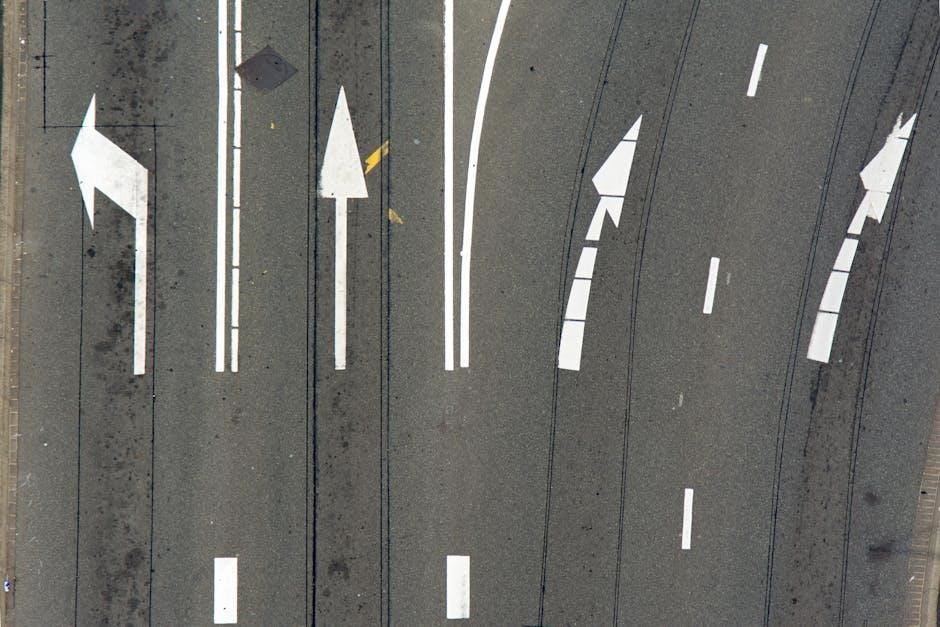
A guided sharpening system is a tool designed to help users achieve precise blade sharpening by maintaining consistent angles and reducing errors, suitable for both novices and experts.
1.1 What is a Guided Sharpening System?
A guided sharpening system is a tool designed to simplify the sharpening process by using angle guides and adjustable abrasives to maintain consistent edge geometry, ensuring precise and repeatable results for knives, tools, or blades, suitable for both beginners and experienced users.
1.2 Brief History and Evolution
Guided sharpening systems trace their origins to early 20th-century tools aimed at simplifying blade maintenance. Over decades, innovations like adjustable angle guides, interchangeable abrasives, and ergonomic designs have transformed these systems, catering to both professionals and hobbyists, making precise sharpening more accessible and efficient for all skill levels.

Benefits of Using a Guided Sharpening System
Guided sharpening systems offer improved consistency, ease of use, and time-saving advantages, making them ideal for both beginners and experienced users. They enhance precision and reduce the risk of damaging blades, ensuring sharper results with minimal effort, while also catering to a wide range of blade types and sharpening needs.
2.1 Improved Consistency
Guided sharpening systems ensure consistent results by maintaining precise angles and reducing human error. This feature is particularly beneficial for amateurs, as it helps achieve uniform sharpness across blade edges; The fixed angle guides and structured process minimize variability, making it easier to replicate professional-level sharpness every time. This consistency is key for maintaining reliable tool performance and extending blade longevity.
2.2 Ease of Use for Beginners
Guided sharpening systems are designed to simplify the sharpening process, making it accessible for beginners. They often feature pre-set angles, step-by-step instructions, and ergonomic designs that guide the user through each stage. This eliminates the need for extensive prior knowledge or skill, allowing new users to achieve professional-quality results with minimal effort and practice, ensuring a smooth learning curve.
2.3 Time-Saving
Guided sharpening systems significantly reduce the time required to sharpen blades. By providing predefined angles and streamlined processes, these systems eliminate trial and error, allowing users to achieve sharp edges quickly. This efficiency makes them ideal for professionals and enthusiasts who value productivity, ensuring tools are ready for use faster than traditional sharpening methods, which often require extensive time and practice.
2.4 Versatility Across Different Blades
Guided sharpening systems offer exceptional versatility, accommodating various blade types and sizes. Whether for knives, chisels, or saws, these systems adapt to different edge geometries, ensuring consistent results. Their adjustable features make them suitable for sharpening straight, curved, or angled blades, making them a versatile tool for any workshop or kitchen, catering to diverse sharpening needs with precision and ease.
Key Features of a Guided Sharpening System
Guided sharpening systems feature advanced designs that enhance precision and user experience, including adjustable angle guides and interchangeable abrasives, making them suitable for both professionals and beginners.
3.1 Angle Guidance Technology
Angle guidance technology ensures precise blade positioning by maintaining optimal sharpening angles, typically between 17° and 20°, enhancing consistency and reducing the risk of damage. This feature is especially beneficial for beginners, as it simplifies the learning process and delivers professional-grade results efficiently. The technology often includes adjustable magnetic guides to accommodate various blade types and user preferences.
3.2 Multiple Abrasive Options
Guided sharpening systems often include multiple abrasive options, such as diamond stones, ceramic stones, and sandpaper, allowing users to tailor the sharpening process to specific blade types and edge requirements. These abrasives vary in grit, from coarse for initial sharpening to fine for polishing, ensuring a razor-sharp finish. The ability to swap abrasives enhances versatility and customization for different sharpening needs.
3.3 Ergonomic Design
Guided sharpening systems feature ergonomic designs that enhance comfort and control during use. Contoured handles, adjustable rests, and balanced construction reduce fatigue, allowing for extended sharpening sessions. These designs ensure precise alignment and ease of movement, making the sharpening process more efficient and user-friendly, especially for those new to blade maintenance.

How Guided Sharpening Systems Work
Guided sharpening systems use precision angle guides and controlled movements to maintain consistent blade sharpening. They typically involve setting the desired angle, drawing the blade across an abrasive surface, and monitoring progress for optimal results.
4.1 Step-by-Step Sharpening Process
The process begins with securing the system and setting the desired sharpening angle. Next, the blade is drawn across the abrasive surface while maintaining light pressure. The system guides the blade to ensure consistent strokes. After several passes, the blade is flipped to sharpen the opposite edge. Finally, a honing step refines the edge for maximum sharpness. This method ensures precision and repeatability, making it ideal for both beginners and experienced users. The guided nature of the system minimizes errors, allowing for a razor-sharp finish every time. Regular use enhances skill development and reduces the learning curve significantly. The entire process is efficient and time-saving, catering to various types of blades and sharpening needs. By following these steps, users can achieve professional-grade results effortlessly.
4.2 Role of Angle Guides
Angle guides ensure consistent blade positioning, maintaining the optimal sharpening angle throughout the process. They eliminate guesswork, especially for beginners, by providing a stable reference point. This feature minimizes errors and enhances precision, allowing users to achieve a sharp, even edge effortlessly. The guides adapt to various blade types, making them indispensable for both novice and expert sharpeners. Their presence guarantees repeatable results.
Advantages Over Traditional Sharpening Methods
Guided sharpening systems offer superior speed, ease, and consistency compared to traditional methods, making them ideal for both beginners and experienced users alike.
5.1 Precision and Accuracy
Guided sharpening systems excel in delivering unmatched precision and accuracy by maintaining consistent angles and minimizing human error, ensuring razor-sharp edges. This makes them particularly beneficial for professionals and newcomers alike, guaranteeing consistent results every time.
5.2 Reduced Risk of Damage
Guided sharpening systems significantly lower the risk of damaging blades by providing controlled movements and precise angle maintenance, preventing over-sharpening or uneven edges. This makes them ideal for valuable or delicate tools, ensuring longevity and maintaining blade integrity effectively.
5.3 Faster Learning Curve
Guided sharpening systems streamline the learning process for newcomers by eliminating the complexity of manual sharpening. They offer structured guidance, enabling users to master techniques quickly. This intuitive approach ensures that even those with limited experience can achieve professional-level results, making the system an indispensable tool for skill development.

Choosing the Right Guided Sharpening System
Selecting the ideal guided sharpening system involves considering compatibility, features, and user expertise. It ensures a seamless sharpening experience tailored to specific needs and skill levels.
6.1 Considerations for Beginners vs. Experts
Beginners benefit from systems with intuitive angle guides and ergonomic designs, ensuring ease of use and consistent results. Experts may prefer models offering adjustable features and advanced abrasives for precision. Both groups value compatibility with various blade types, but experts often seek additional customization options for specialized sharpening needs.
6.2 Importance of Compatibility
Compatibility is crucial when selecting a guided sharpening system. Ensure the system supports various blade types, including knives, chisels, and tools. Universal adapters and adjustable features enhance versatility, making it suitable for different sharpening needs. Compatibility with multiple abrasive types further extends its utility, ensuring optimal performance across various sharpening tasks and materials.

Maintenance and Care Tips
Regular cleaning and proper storage are essential to maintain the system’s efficiency. Replace abrasives when worn and check for alignment issues to ensure optimal performance.
7.1 Cleaning and Storage
Regularly clean the system with a soft brush and mild detergent to remove metal particles. Store it in a dry, cool place to prevent rust. Use a protective cover to shield from dust. Proper maintenance ensures longevity and consistent sharpening performance, keeping the tool in optimal working condition for years.
7.2 Replacing Abrasives
Replace abrasives when they show visible wear or decreased sharpening performance. Use the system’s replacement guides to ensure proper alignment. Clean the platform before installing new abrasives to maintain effectiveness. Regular replacement ensures consistent results and extends the system’s lifespan, keeping your blades sharp and maintaining optimal sharpening efficiency over time.
Popular Brands and Models
Leading brands like Work Sharp and Spyderco offer innovative guided sharpening systems, known for their precision and durability, catering to both professionals and home users effectively.
8.1 Overview of Top Brands
Top brands like Work Sharp and Spyderco dominate the market with their high-quality guided sharpening systems. These brands are renowned for their innovative designs, durability, and user-friendly features, making them favorites among both professionals and home sharpeners. Their systems often include advanced angle guides and multiple abrasive options, ensuring precise and efficient sharpening experiences for various blades.
8.2 Notable Models and Their Features
Notable models include the Work Sharp Precision Adjust Elite, known for its adjustable angle guide and interchangeable abrasives. The Spyderco Sharpmaker offers a compact design with easy-to-use angle guides. These models are celebrated for their versatility, catering to both beginners and experts, and are designed to handle a wide range of blades with precision and ease, ensuring optimal sharpening results every time.
Guided sharpening systems offer unmatched consistency, ease of use, and versatility, making them indispensable for all skill levels. Their innovative technology ensures precise results, revolutionizing blade sharpening forever.
9.1 Recap of Benefits
Guided sharpening systems deliver consistent results, precision, and ease of use, making blade sharpening accessible to all skill levels. They save time, reduce errors, and accommodate various blades, ensuring efficient and effective sharpening experiences for professionals and beginners alike.
9.2 Future of Sharpening Technology
The future of sharpening technology lies in AI-driven systems, smart angle guides, and eco-friendly materials. Innovations like real-time feedback devices and automated sharpening robots are expected to redefine precision and efficiency. These advancements will cater to both professionals and hobbyists, ensuring sharper results with minimal effort and environmental impact.